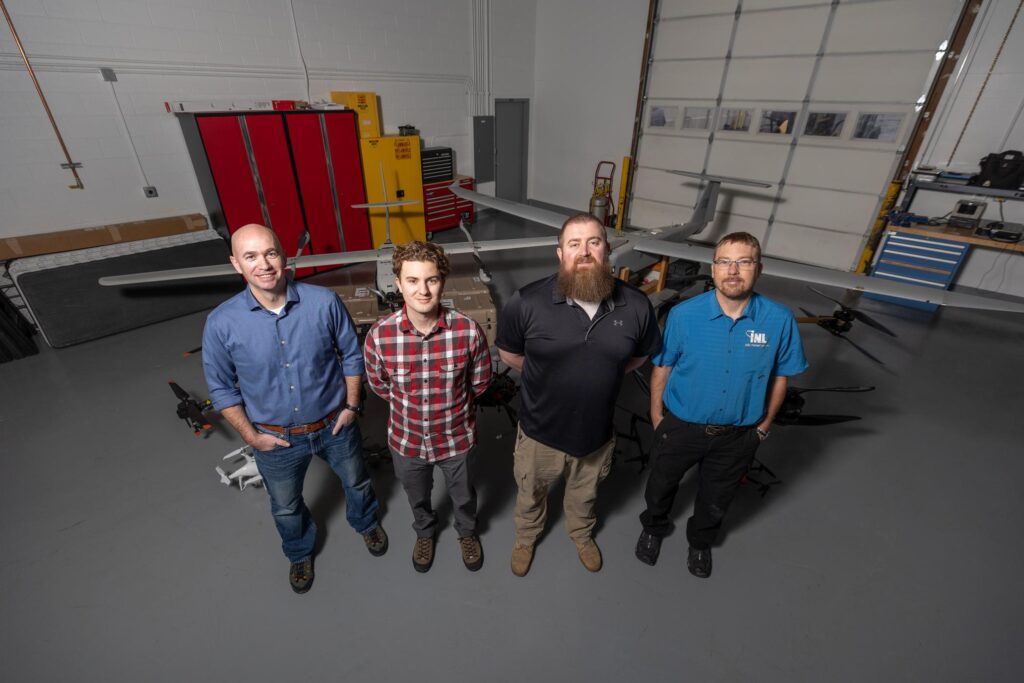Unmanned Aerial Systems
Idaho National Laboratory’s (INL) Unmanned Aerial Systems (UAS) program supports national security by leveraging its one-of-a-kind test bed capabilities to test innovative technologies at scale. In recent decades, unmanned aerial systems, or drones, have evolved from large machines of military might to intelligent, agile, hand-launched aircraft. As UAS capabilities increase, so do their applications. Drones are now used for commercial applications and military operations. Whatever the application, drones require advanced sensors and thorough testing.
INL excels in sensor and platform testing, validation and demonstration. With hundreds of miles of open terrain, a secure boundary and state-of-the-art wireless test bed, INL is a prime location for UAS testing.
Expansive airspace, a wireless testbed, explosives test range and a radiological test range are all features the lab provides.
In-house testing capabilities include test design, configuration, demonstration, reset and report.
The experimental radio station status means INL coordinates frequencies over its 890-square-mile range.
Researchers can support backshift, weekend and night operations 24/7.
Labor rates include access to the airfield and range with no additional fees.
Flight Operations
UAS Test Range
INL offers an expansive 890-square-mile testing site in southeast Idaho, providing a secure and isolated environment for federal UAS testing. For nearly 30 years, INL has tested drone platforms and sensor packages to support federal missions and commercial needs.
INL’s engineering capabilities include integrating advanced sensors, electronics, and communications into both military and commercial UAS platforms. The lab can manufacture custom electronics and safely test explosives with expert oversight.
Drones undergo rigorous testing in real-world conditions on INL’s range, facing severe weather, temperature extremes, and long-distance challenges both day and night. INL researchers lead in the development and integration of sensors that collect and transmit vital information.
The facility boasts a comprehensive in-house wireless network for flight operations, monitoring, and data transmission capable of creating congested and contested communication environments. INL is strategically situated in a caldera with multiple wireless towers, enabling effective communication tests and easy tower handoffs.

Additional wireless capabilities include:
- Low radio frequency noise floor
- On-site spectrum manager
- National Telecommunications and Information Administration experimental radio station
- 2G-5G cellular communication networks
- Long-term evaluation, universal mobile telecommunications service and global messaging system tier 1 carrier networks
- WiMax, Wi-Fi, Zigbee and Bluetooth networks
- Full fiber backhauls
- 120db-10kHz resolution bandwidth
- Measured spectrum 31Hz-10GHz
Sensors that INL researchers have developed, tested and deployed include:
- Radiation detection and mapping
- Infrared and hyperspectral cameras
- Real-time image analysis and composition
- Air sampling and collection devices
- High bandwidth encrypted communication devices
